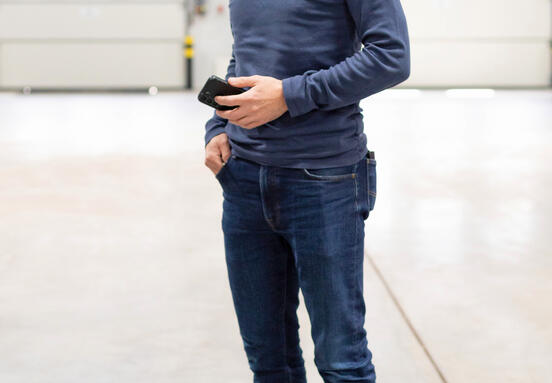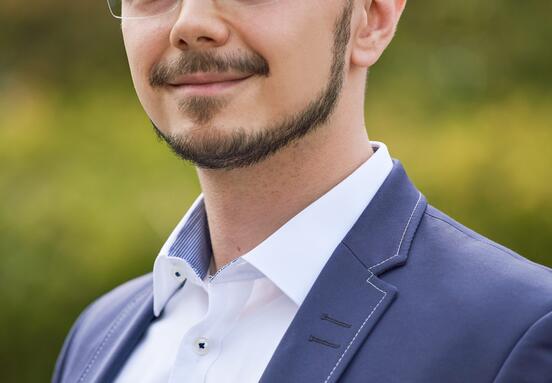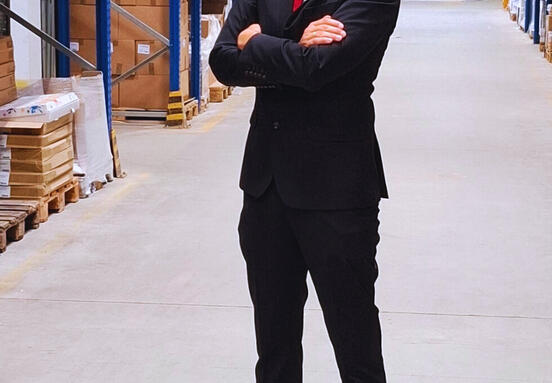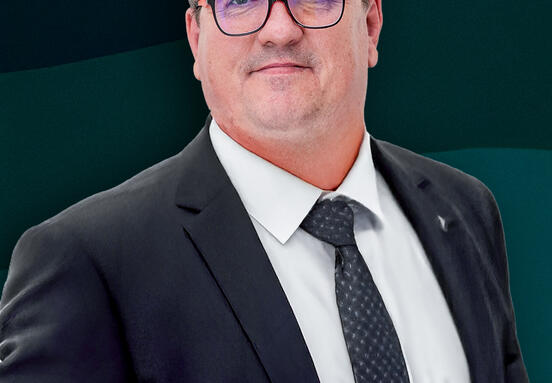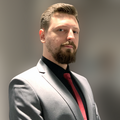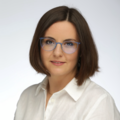KF: What are the key areas of research and development that the company is currently focusing on?
NK: The company's activities are focused on providing our clients with environmental and geotechnical testing services, which are a prelude to obtaining information about a possible problem or lack thereof in terms of soil and groundwater contamination, as well as soil parameters in terms of their strength and stiffness. In the case of encountering a problem with weak or contaminated soils (appropriately selected studies), studies of appropriate quality are crucial because they will determine the next steps necessary to enable the investment process. They affect the choice of technology, the time of implementation and, of course, the final cost to be borne by the investor. In Poland, we place a strong emphasis on the implementation of the latest research methods in the field of soil and groundwater contamination testing. In order to ensure the desired effect in the case of pollution research, we have focused on qualityand to this end we have implemented a system that has been accredited by the PCA, which is a guarantee that the system is implemented and realistically conducted and monitoredin the company's operations. The accreditation applies to soil and groundwater sampling for environmental testing. This is a key and necessary element because it has the greatest impact on what sample will be delivered to an accredited laboratory, and thus what result will be obtained. The high quality of environmental samples is related to the collection methodology, and this, of course, to the equipment that is used. In order to achieve quality, we have invested in a direct push device, which allows us to take samples continuously without the possibility of mixing during the plunge of the drilling tool. An informed investor wants to have the right to make an informed decision based on real authoritative data, and unfortunately in our industry we see a lot of activity resulting in test reports where a person without much experience is able to see that the results presented may have nothing to do with reality. Another of our activities was to bring to the market in Poland probes for environmental studies, which are pressed into the ground and allow to obtain real-time qualitative information relating to the type of contamination and the exact location of its occurrence, in the studied ground profile. MIHPT (Membrane Interface Probe with Hydraulic Profiling Tool) and OIHPT (Optical Image Profiler with Hydraulic Profiling Tool) probes, make it possible to obtain information on volatile organic compounds, hydrocarbons, solvents, soil electrical conductivity or hydraulic conductivity. The great advantages of these methods are the speed of testing, the relatively low cost and the information in the full profile, which eliminates the limitations of classical methods.
KF: How does the company tailor its remediation technologies to the specific needs of industrial sites, such as those for warehouses?
NK: Looking at the problem of cleaning up post-industrial sites, but also at remediation processes in general, where we have to deal with the ground-water medium, which is already a difficult, specific issue in itself, and if we add to this the contamination, which unfortunately is often a mixture of different chemical compounds, and take into account the water that flows in the ground and is supplied from above, for example, during precipitation, the issue itself becomes extremely complicated. Preparing a solution with so many boundary conditions, as well as the amount of data needed for design, means that low-quality input information will multiply making it unfortunate that the final solution will not guarantee an environmental effect within the specified time and budget. In order to assure our clients that the presented solutions are correct we conduct laboratory scale studies, and when further analysis is necessary we perform pilot studies, which on a micro scale allow us to eliminate possible irregularities that could not be done in laboratory studies. Unfortunately, there is no one-size-fits-all method that is always effective looking at the goal, budget and time. Only an individual approach to the problem of remediation allows us to solve our clients' problems in this area in partnership.
KF: What is your approach to educating clients and business partners in the context of soil and water testing and remediation?
NK: A market analysis of the awareness of ground and groundwater contamination issues at an early stage of our activity has shown that, unfortunately, awareness in this area in Poland is at a very low level compared to Western European countries, whose remediation activities started 20-30 years earlier. In recent years, as a society, we have heard a lot about air pollution, you can check it on various services and get the information you want, in the course of real because it is easy and very quick to study. Unfortunately, in the case of the ground, there is currently no such possibility, so we carry out various activities to educate the public, our customers, partners, government institutions or local authorities. We conclude that it is much easier to cooperate with an informed customer who, on the one hand, knows the risks of living or staying in chemically contaminated areas, and, on the other hand, understands the basic methods or how to solve them. By educating our partners, we try to translate this difficult issue into something much simpler that is understandable, transparent to any person who is not an expert in this field.
KF: What are the most important factors that can affect the time and cost of the brownfield cleanup process?
NK: The primary factor is recognizing the problem to be faced. And this is where reliable quality geotechnical and hydrogeological studies come into play, as well as studies of the contaminant itself, which may be in the ground, groundwater, floating on water, or in the air that fills the pores of the ground. This information will determine the next steps to be taken, e.g., detailing the studies to narrow down the remediation area, laboratory studies, pilot studies, draft remediation plan, decision of the Regional Director of Environmental Protection, remediation method, expected effect, time, etc...,
KF: Can you share an example of a project that used innovative technological solutions?
NK: We have very interesting projects in our portfolio, where we had to apply innovative solutions looking at the technologies that the market in Poland uses. One such project is the Kalina Pond in Swietochlowice, where one of the technologies used was bottom sludge dewatering and thermal desorption. Another example is the remediation activities we conducted at Zachem in Bydgoszcz, where we used “pump&treat” technologies to achieve an environmental effect. Contaminated groundwater was pumped out of the rock mass, then treated in the installation after which it was pumped back into the rock mass in a closed circuit. At the heart of the entire solution was an innovative installation, which we designed and tested in micro steel in pilot tests, and then built and used with full success for remediation. This installation is currently the only one in Poland that uses, among other methods, low-potential and high-potential ozonation for remediation projects.
For more information, please visit: https://www.remea.pl/.
Norbert Kurek, Ph.D., Member of the Board of Directors / General Manager
Norbert Kurek is a graduate of the Gdansk University of Technology, where he majored in construction with a specialization in geotechnics. He also earned a doctorate in technical sciences in the field of construction. He completed a master's internship at Joseph Fourier University in Grenoble, France. He completed postgraduate studies in project management at the Warsaw School of Economics and special studies in “Geotechnics and Environmental Engineering” at Gdansk University of Technology. He is also a graduate of the MBA program at the Warsaw School of Economics.
He started his professional work in 2004 as a member of Prof. Zbigniew Sikora's team. From 2006, he worked at Soletanche Poland as a construction engineer and then as a works manager in the execution department. Since 2009, he headed the soil strengthening department, building the company's strategy in this area and its market position. In 2011, he joined Menard Polska, where he took the position of Deputy General Manager and Director of the Center Branch. Since 2016, by decision of the Board of Directors, he was appointed to the position of proxy at Menard Polska. As of 2019. Norbert Kurek is General Director of REMEA in Poland where he actively develops the company in the field of high-quality environmental research and soil and groundwater remediation
Norbert Kurek is an expert (building surveyor in geotechnics) with more than 18 years of experience in geotechnics. He has participated in the development of numerous geotechnical projects, remediation plan designs and specialized soil investigation reports. REMEA's team of specialists under his leadership has carried out thousands of investigations nationwide and many successful remediations. Examples of such projects include the revitalization of the area after the former Orzegów Coke Plant in Ruda Śląska, remediation work on the site of the former Zakłady Chemiczne “Zachem” S.A. in Bydgoszcz, or innovative work on the Kalina pond in Świętochłowice. His activities have also resulted in 25 scientific and technical publications in domestic and foreign journals, of which he is the author or co-author.

